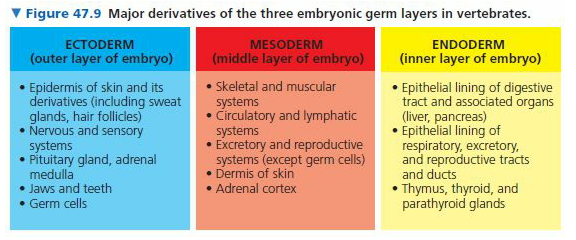- Joined
- Apr 29, 2011
- Messages
- 2,171
- Reaction score
- 863
Some of the things that are associated with certain germ layers (e.g., brain = ectoderm) are obvious.
But is it worth memorizing the specifics?
For example, adrenal medulla = ectoderm. Adrenal cortex = mesoderm.
Thymus, thyroid, parathyroid = endoderm.
I'm finding this stuff harder to memorize than amino acids structures lol.
But is it worth memorizing the specifics?
For example, adrenal medulla = ectoderm. Adrenal cortex = mesoderm.
Thymus, thyroid, parathyroid = endoderm.
I'm finding this stuff harder to memorize than amino acids structures lol.

